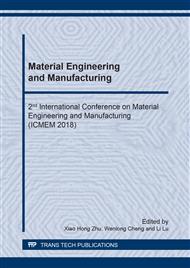p.81
p.91
p.97
p.102
p.109
p.119
p.124
p.131
p.136
Properties of Low Water/Cement Ratio and High Compressive Strength Pervious Concrete
Abstract:
The purpose of this study is to discuss the properties of low water/cement ratio and high compressive strength pervious concrete. Two sizes of air-cooling electric arc furnace slag (EAFS), for the same size of 0.24 - 0.48 cm and 0.48 - 0.96 cm, were prepared as the coarse aggregates. Two water-to-cement ratios and three filled percentages (70, 80, and 90%) of voids by cement pastes were selected as variables. The unit weight, connected porosity, water permeability coefficient, compressive strength, and flexural strength of pervious concrete were conducted. Test results show that the pervious concrete with higher filled percentage of voids by cement paste has higher unit weight, compressive strength, and flexural strength and smaller connected porosity and water permeability coefficient. The lower the water/cement ratio and EAFS size, the superior the properties. At the water/cement ratio of 0.25, pervious concrete with EAFS size of 0.24 – 0.48 cm and 90% filled percentage of voids by cement pastes had the highest compressive strength of 35 MPa and flexural strength of 7 MPa.
Info:
Periodical:
Pages:
136-140
Citation:
Online since:
September 2018
Authors:
Price:
Сopyright:
© 2018 Trans Tech Publications Ltd. All Rights Reserved
Share:
Citation:


